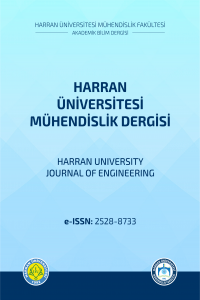Effects of Primary Settler on Activated Sludge Operation
In this study, the effects of pre-precipitation unit on activated sludge unit were investigated. An aerobic activated sludge processes treating domestic wastewater designed on the basis of theoretical calculations for two different case – in the presence and absence of primary settler. A domestic wastewater containing 650 and 530 mg/L total and biodegradable COD treated in an activated sludge process in the presence and absence of primary settling respectively. It is calculated that presence of primary settling decreased the total excess sludge (an average 33%), total mass in the system (34%) reactor volume (34%) and oxygen requirement (23%) in the activated sludge system. Presence of primary settler removes a portion of total COD in the influent and therefore it decreases the COD loading to activated sludge process.
Anahtar Kelimeler:
activated sludge, sludge age, primary settler
Effects of Primary Settler on Activated Sludge Operation
In this study, the effects of pre-precipitation unit on activated sludge unit were investigated. An aerobic activated sludge processes treating domestic wastewater designed on the basis of theoretical calculations for two different case – in the presence and absence of primary settler. A domestic wastewater containing 650 and 530 mg/L total and biodegradable COD treated in an activated sludge process in the presence and absence of primary settling respectively. It is calculated that presence of primary settling decreased the total excess sludge (an average 33%), total mass in the system (34%) reactor volume (34%) and oxygen requirement (23%) in the activated sludge system. Presence of primary settler removes a portion of total COD in the influent and therefore it decreases the COD loading to activated sludge process.
Keywords:
Activated sludge, sludge age, primary settler,
___
- Charpentier, J., Martin, G., 1996. New approach to oxygen requirement for low-load activated sludge. Water Res. 30, 2347–2356.
- Eddy, M.&, Burton, F.L., Stensel, H.D., Tchobanoglous, G., 2003. Wastewater engineering: treatment and reuse. McGraw Hill.
- Groves, K.P., Daigger, G.T., Simpkin, T.J., Redmon, D.T., Ewing, L., 1992. Evaluation of oxygen transfer efficiency and alpha-factor on a variety of diffused aeration systems. Water Environ. Res. 691–698.
- Gujer, W., 1980. The effect of particulate organic material on activated sludge yield and oxygen requirement. Prog. Water Technol. 12.
- Henze, M., Harremoes, P., la Cour Jansen, J., Arvin, E., 2001. Wastewater treatment: biological and chemical processes. Springer Science & Business Media.
- Horan, N.J., 1989. Biological wastewater treatment systems: theory and operation. John Wiley & Sons Ltd.
- Yayın Aralığı: Yılda 3 Sayı
- Başlangıç: 2016
- Yayıncı: Harran Üniversitesi
Sayıdaki Diğer Makaleler
2.45 GHz mikrodalga frekansının yabancı ot mücadele yöntemi olarak kullanılması
İstanbul Avrasya Gösteri ve Etkinlik Alanı Alternatif Enerji Yatırımı Fizibilite Çalışması
Fatma BOZKAYA YETKİN, Doç. Dr. Kübra CİHANGİR ÇAMUR
GEÇMİŞTEN GÜNÜMÜZE KEMER KÖPRÜLER
Mehmet TANRIVERDİ, M. Arif GÜREL
Ali İhsan KAYA, Murat KISA, Mustafa ÖZEN
Dilan TOPRAK, Güzel YILMAZ, Tülay YILMAZ, Kerem GÜLPINAR, Yakup ÇAKMAK, Amine YÜCEL, Deniz UÇAR
Effects of Primary Settler on Activated Sludge Operation
Tarhananın Besinsel Önemi ve Fonksiyonel Bileşenlerce Zenginleştirilmesi
Ali Mücahit KARAHAN, Mehmet KÖTEN, Leyla EREN KARAHAN, Mehmet Metin YAZMAN
Deneyim Kalitesi odaklı Akıllı İşbirlikçi Çoklu-erişimli Uç Hesaplama Çerçevesi
